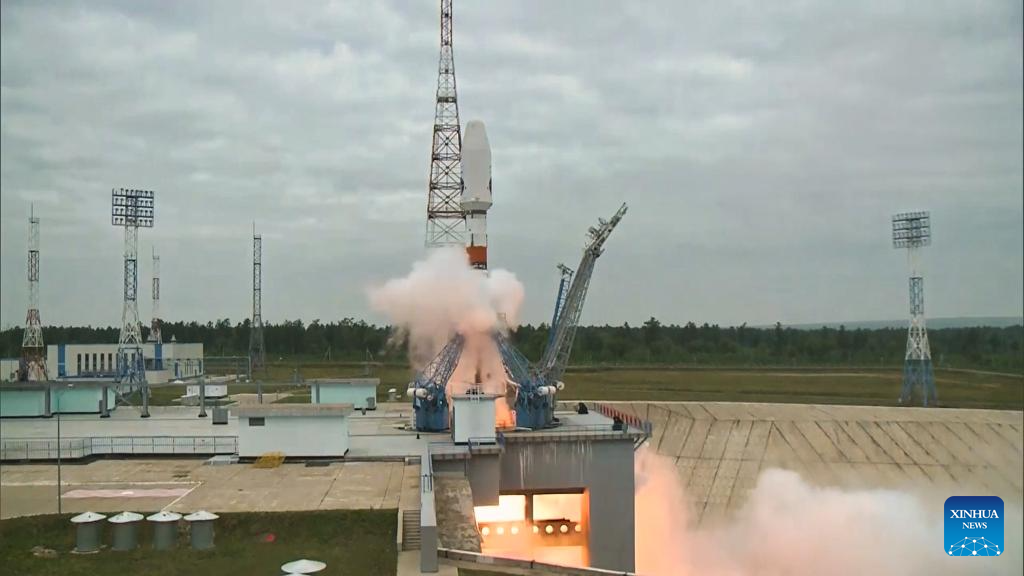
This video screenshot shows the Soyuz-2.1b rocket carrying the Luna-25 lunar station blasting off from the Vostochny Cosmodrome in the Amur Oblast of Russia's Far East on Aug. 11, 2023. Russia successfully launched the Luna-25 lunar station early Friday, embarking on a historic mission to explore the south pole of the Moon. Luna-25 is expected to become the first station in history to land on the south pole of the Moon, a region with complex terrain and potential resources. (Xinhua)
VLADIVOSTOK, Russia, Aug. 11 (Xinhua) -- Russia successfully launched the Luna-25 lunar station early Friday, embarking on a historic mission to explore the south pole of the Moon.
The station, which does not have a return capsule, was launched by a Soyuz-2.1b rocket with a Fregat upper stage from the Vostochny Cosmodrome in the Amur Oblast of Russia's Far East.
Nine minutes after lift-off, the Fregat upper stage with the Luna-25 station separated from the third stage of the rocket. About one hour later, Luna-25 separated from the Fregat upper stage and successfully entered the flight path to the Moon, marking the successful completion of the first stage of its mission.
The mission consists of four stages. The second stage will be a flight to the Moon, which will take about five days. The trajectory will be adjusted twice: 1.5 days after the launch, and again one day before entering orbit around the Moon.
The third stage will be orbiting the Moon. The station will fly around the Moon in a circular polar orbit at an altitude of 100 km for three days.
The fourth stage will be the landing. The station will transfer to an elliptical landing orbit with a minimum altitude of 18 km. A soft landing in the area of the lunar south pole is expected to occur. According to the Russian Academy of Sciences, the landing is likely to happen on Aug. 21.
Luna-25 is expected to become the first station in history to land on the south pole of the Moon, a region with complex terrain and potential resources. The main objectives of the mission are to test the technologies of soft landing, study the internal structure and explore the resources of the lunar south pole. ■



